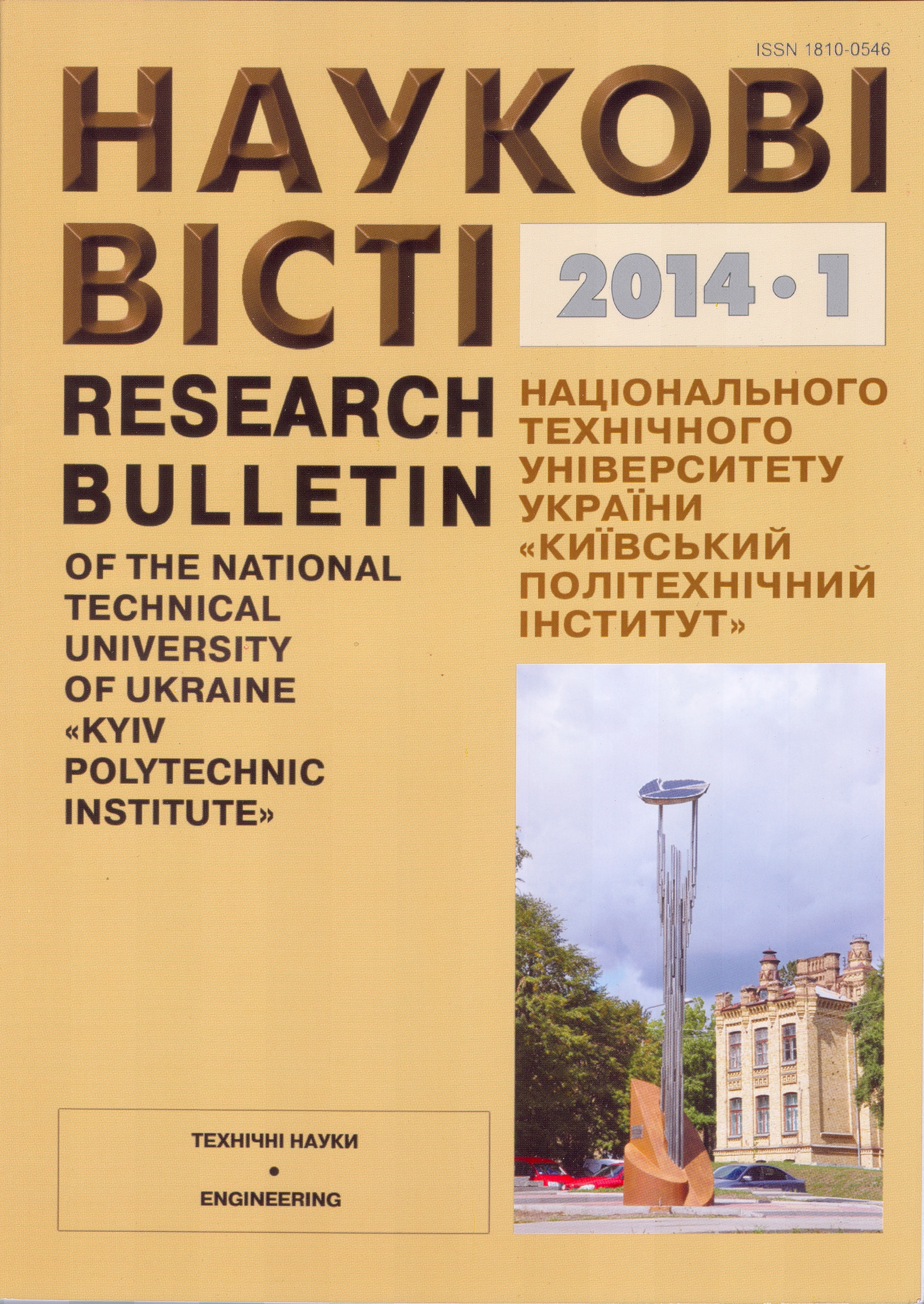Momentary Contact Temperatures at Fine Diamond Grinding of Pieces from Composite Materials Based on Tool Steels Wastes
DOI:
https://doi.org/10.20535/1810-0546.2014.1.26579Keywords:
Composite alloys, Momentary contact temperatures, Diamond tools, Grinding parametersAbstract
The results of experimental researches of momentary contact temperatures which appear on the end of diamond grain’ cutting edge at fine grinding of friction pieces of new composite materials on the base of utilized and regenerated grinding alloy tool steels’ wastes of 86Х6НФТ, 5Х3В3МФС and 7ХГ2ВМФ with solid lubricant CaF2 additives have been presented in this article. It was studied that the influence of abrasives composition and cutting parameters on temperatures value. It was shown the type grains material of diamond composition tool, granulosity of tools and abrasive disc’s material of bond have essential influence on the temperature field at fine grinding process. It was demonstrated that the for formation of high quality parameters of working surfaces of details made from new composites it is necessary to apply the diamond discs on the base of synthetic diamonds with granulosity 14–20 mm on elastic bond. The experiments showed the decrease in ~2,0–2,5 times of diamond disc granulosity reduces the momentary contact temperatures value. The minimization of temperature field in processing zone at fine diamond grinding of new composite alloys on the base of grinding wastes of tool steels takes place at using the fine-grain diamond tools.References
Підшипниковий композиційний матеріал на основі інструментальної сталі: Пат. України № 60522, МПК С22С33/02 (2006.01) / Т.А. Роїк, А.П. Гавриш, П.О. Киричок та ін. – Опубл. 25.06.2011, Бюл. № 12.
Підшипниковий композиційний матеріал на основі сталі: Пат. України № 25627, С22С33/ 02 / Т.А. Роїк, А.П. Гавриш, В.В. Холявко, Б.П. Зора. – Опубл. 10.08.07, Бюл. № 12.
Антифрикційний композиційний матеріал на основі інструментальної сталі: Пат. України № 102299, С22С33/02 / Т.А. Роїк, А.П. Гавриш, О.А. Гавриш, Ю.Ю. Віцюк. – Опубл. 25.06.2013, Бюл. № 12.
Вплив складу інструменту і режимів тонкого алмазного шліфування на шорсткість поверхонь композитних підшипників ковзання поліграфічних машин / А.П. Гавриш, П.О. Киричок, Т.А. Роїк, Ю.Ю. Віцюк // Наукові Вісті НТУУ “КПІ”. – 2013. –№ 5. – С. 80–86.
Ткачев А.Г. Шубин И.Н. Технология машиностроения. – Тамбов: Изд-во Тамб. гос. техн. ун-та, 2009. – 164 с.
M Cocks, “The effect of compressive and smearing forces on the film present in metallic contacts”, Aircraft Production, vol. 2, no. 4, pp. 42–59, 2013.
Нові технології фінішного оброблення композиційних підшипників ковзання для жорстких умов експлуатації: Монографія / А.П. Гавриш, О.О. Мельник, Т.А. Роїк та ін. – К.: НТУУ “КПІ”, 2012. – 196 с.
Гавриш А.П., Мельничук П.П. Алмазно-абразивна обробка магнітних матеріалів: Монографія. – Житомир: ЖДТУ, 2003. – 652 с.
Основи теорії різання матеріалів: Підручник / М.П. Мазур, Ю.М. Внуков, В.Л. Доброскок та ін.; за заг. ред. М.П. Мазура. – Львів: Новий світ, 2010. – 423 с.
Сверхтвердые материалы. Получение и применение: Монография в 6 т. / Под общ. ред. Н.В. Новикова. – К.: ИСМ им. В.Н. Бакуля НАНУ, 2007. – Т.6: Алмазно-абразивный инструмент в технологиях обработки / Под ред. А.А. Шепелева. – 340 с.
Лавриненко В.І., Новіков М.В. Надтверді абразивні матеріали в механообробні: Енциклоп. довідник / За заг. ред. акад. НАН України М.В. Новікова. – К.: Вид-во ІНМ ім. В.М. Бакуля НАН України, 2013. – 456 с.
Downloads
Published
Issue
Section
License
Copyright (c) 2017 NTUU KPI Authors who publish with this journal agree to the following terms:- Authors retain copyright and grant the journal right of first publication with the work simultaneously licensed under CC BY 4.0 that allows others to share the work with an acknowledgement of the work's authorship and initial publication in this journal.
- Authors are able to enter into separate, additional contractual arrangements for the non-exclusive distribution of the journal's published version of the work (e.g., post it to an institutional repository or publish it in a book), with an acknowledgement of its initial publication in this journal.
- Authors are permitted and encouraged to post their work online (e.g., in institutional repositories or on their website) prior to and during the submission process, as it can lead to productive exchanges, as well as earlier and greater citation of published work

